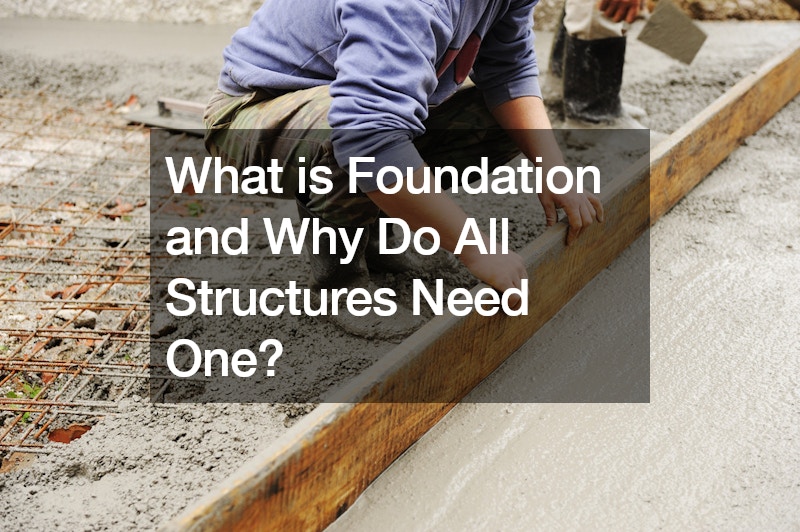
Foundations are like the invisible heroes of the building world. They support everything we build on top of them, from houses to bridges, ensuring they stay upright and stable. But what exactly is a foundation, and why are they so important?
At its simplest, a foundation is the part of a building that sits below ground level and distributes the weight of the structure evenly into the ground. Imagine a big, sturdy table holding up a heavy book. The legs of the table are like the foundation, spreading out the weight so it doesn’t all squash down in one spot.
Now, you might be wondering why we need foundations at all. After all, couldn’t we just plonk our buildings on the ground and call it a day? Well, not quite. Without a foundation, buildings would be at risk of sinking, tilting, or even collapsing over time. Here’s why:
Preventing Differential Movement:
One big reason we need foundations is to prevent something called “differential movement.” This fancy term refers to when one part of a building moves differently from another part. Picture a stack of books. If you push on one end, the books might topple over. Similarly, if one part of a building sinks more than another part, it can cause cracks, leaks, and other problems.
Bearing Failure:
Another important job of a foundation is to spread out the weight of a building so it doesn’t crush the ground underneath it. Think about how heavy a building can be, especially if it’s a tall skyscraper or a massive bridge. The foundation helps to distribute this weight evenly, preventing the ground from getting squished like a pancake.
Now, let’s talk about the different types of foundations. One common type is a concrete foundation, which is basically a big slab of concrete that sits under the building. It’s like a solid, sturdy base that keeps everything above it in place. Concrete foundations are great for many types of structures because they’re strong, durable, and resistant to things like bugs and moisture.
But not all foundations are made of concrete. Some buildings use pier and beam foundations, which are like big wooden legs that hold up the structure. Others might rely on driven piles, which are long metal rods driven deep into the ground to provide support.
Regardless of the type, all foundations have the same goal: to keep buildings stable and safe. They do this by distributing weight, preventing movement, and resisting forces like wind and earthquakes.
Common Problems with Foundations:
Many homeowners encounter issues with their foundations, including settling, which occurs when the soil beneath the foundation compresses unevenly, leading to cracks and structural instability. Other common problems include water damage, where moisture seeps into the foundation, causing erosion and weakening its integrity. Additionally, foundation walls may develop cracks over time due to soil movement or structural stress. Understanding these common issues is crucial for homeowners to recognize and address potential problems early on.
Importance of Proper Foundation Design:
Proper foundation design is essential for ensuring the stability and longevity of a structure. Engineers consider factors such as soil conditions, building loads, and environmental forces when designing foundations. A well-designed foundation distributes the weight of the structure evenly, prevents settling and differential movement, and resists external forces like wind and seismic activity. By investing in quality design upfront, property owners can avoid costly repairs and ensure the safety and durability of their buildings.
Environmental Considerations in Foundation Construction:
Environmental factors play a significant role in foundation construction. Soil type, groundwater levels, and climate conditions can all impact the performance of a foundation. Engineers must assess these environmental factors when designing foundations to ensure they can withstand local conditions and comply with environmental regulations. For example, in areas prone to flooding or high water tables, specialized foundation designs like raised or pile foundations may be necessary to mitigate risks. By considering environmental factors during construction, builders can create resilient foundations that stand the test of time.
Foundation Maintenance Tips:
Regular maintenance is key to preserving the integrity of a foundation. Homeowners should inspect their foundations regularly for signs of damage, such as cracks or moisture intrusion, and address any issues promptly. Maintaining proper drainage around the foundation, keeping gutters clean, and controlling moisture levels in the soil can help prevent water-related problems. Additionally, scheduling professional inspections and repairs as needed can extend the life of the foundation and prevent costly structural damage.
In conclusion, foundations are the unsung heroes of the building world. They may not be flashy or exciting, but they’re essential for keeping our structures standing tall. Whether it’s a cozy house or a towering skyscraper, every building needs a solid foundation to call home. So, the next time you walk past a construction site, take a moment to appreciate the hard work happening beneath your feet.
.




